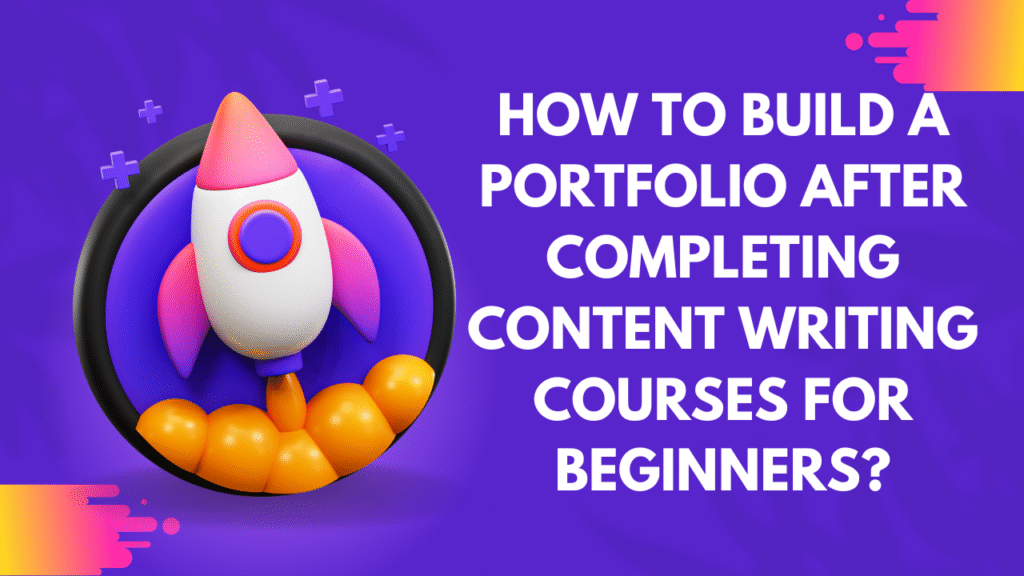Completing a course is the first step in the right direction. Now that you have cleared the basics and understand the fundamentals, this is the time to get all the skills you learned to some good use. The goal is to start finding assignments and tasks that will pay you as a content writer. Most content writing courses for beginners teach how to write content, yet it can be daunting to begin your career. This post aims to help you understand the importance and the process of building your portfolio from scratch. Let’s begin.
Why Do You Need To Build A Portfolio?
Every writer needs to showcase the work that they have created. The skills that you learned from content writing courses for beginners have practical use. A portfolio is just a collection of all your work samples which helps a potential client or recruiter understand your skillset and niche better. A portfolio is needed to establish yourself as a credible content writer, or even considered for a job or task.
Now that you understand why a portfolio is required, you must have doubts and questions about how to begin and what a portfolio must consist of. Let’s get into the details:
What To Include In A Portfolio?
A portfolio is a digital or physical piece of a collection of your best work. It is an essential part of knowing how to position yourself as a writer or editor. A portfolio helps you place yourself in the market and sell yourself to potential clients. Here are the key things you must include in your portfolio, and let’s get into them one by one:
- Introduction
- Samples
- Resume
- Testimonials
- Contact information
Introduction
This is where you will include a small section about yourself, your experiences, your background, and your area of expertise. If you are a beginner, you can mention your interests and the niche that you want to work in. You can also include other skills that complement your writing, like editing, graphic design, social media management, etc.
Gather Best Samples After Finishing Content Writing Courses for Beginners
Next up, you need to make a collection of your best writing work. After you finish with content writing courses for beginners, there must be sample work or practical assignments you must have done. Add these samples to your portfolio. Make sure to mention whether it is paid work or sample work that you have written for. You can list them chronologically or on the basis of the niche you are targeting. Also, you should adjust the portfolio regularly and change it depending on the job you are applying for.
Include that Resume
You should add your resume to your portfolio so the hiring manager or client can go through it to know more about your background. Mention your educational background, certifications and any content writing courses for beginners you have completed in the past. This is a way of providing a brief and letting them know your accomplishments and other skills.
Provide Testimonials After Content Writing Courses for Beginners
Testimonials are any positive reviews and comments about your previous work given by past clients or managers. It could either be about the work you did or your process and work ethic. This helps in adding to your credibility and positioning you as a trusted individual. If you have just completed any content writing courses for beginners, you might not have testimonials as of now, so add them later as your work progresses.
Contact Information
Always at the end of your portfolio, ensure that you have added means for the clients to reach out to you. You can add your phone number, your email, and your social handles like LinkedIn to help them connect to you.
Platforms To Create Your Portfolio After Completion of Content Writing Courses for Beginners
Now that we have gone through the basics of creating a portfolio, the final question is where to create one. If you are an absolute novice and have just finished any content writing courses for beginners, you can create your first samples and file them in a specific folder in Google Docs. Make sure to keep the link shareable so anyone can access it as a viewer.
Platforms like Medium and LinkedIn help you have your work published and develop your writing skills. You can also create your writing portfolios on platforms like WordPress and Wix that offer easy website building and navigation.
Resources That Can Help You Further
As a beginner, you might still have some doubts and questions about content writing and portfolio building. Navigating this all on your own can be daunting and time-consuming for any newbie. Wabbithire offers content writing courses for beginners that consist of not just writing fundamentals but also providing placement support. With help in creating your portfolio by publishing your first blogs on their website, it helps in establishing your confidence in this craft. Enrol today!
And if you are looking to read more posts and articles discussing content writing, check out the blog right here. Our YouTube channel has launched many free resources and courses that can help you start out in your content writing journey. Check it out here.
Conclusion
Having completed your content writing courses for beginners, now it is time to begin your career. Creating a portfolio helps to set you apart from the competition by showing professionalism and direction. You can create your portfolio by including the things mentioned in the blog. With time and practice, you will have a strong portfolio that will speak for itself when you need to apply for a project or job.
Follow Wabbithire for more!




